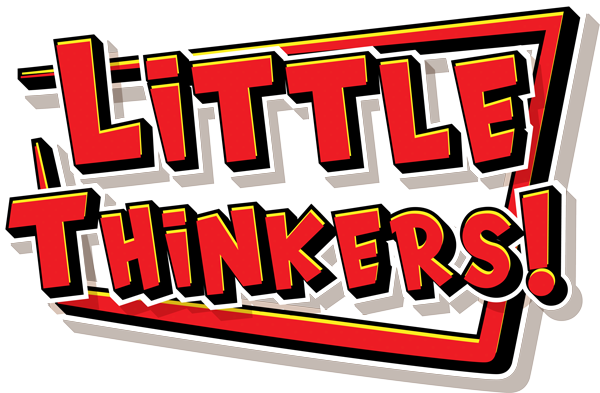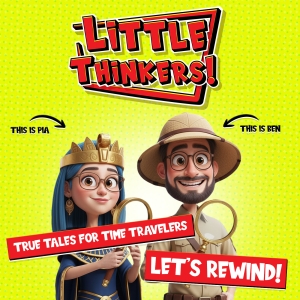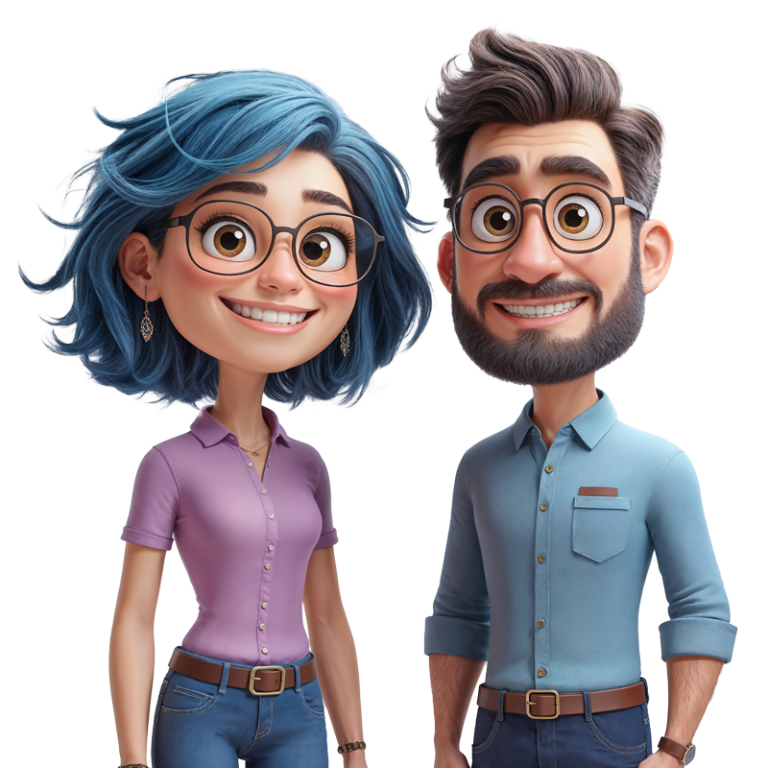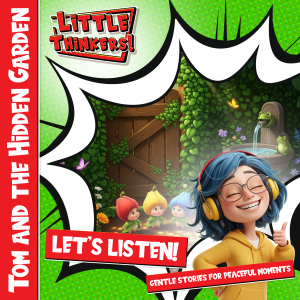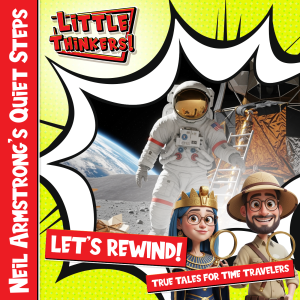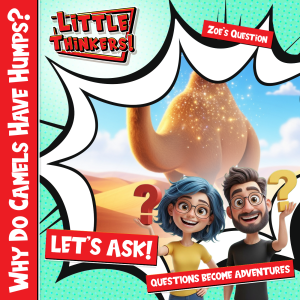Jane Goodall’s Amazing Adventure in the African Forest
Imagine Walking Into the Unknown
Picture this: You’re standing on the shore of a massive blue lake in Africa. The forest rises like a green wall in front of you, full of mystery and wild sounds. You have only a notebook, some binoculars, and the biggest dream of your life. This is exactly what happened to a young woman named Jane Goodall on July 14, 1960, when she stepped onto the shores of Gombe Stream Reserve in Tanzania!
Jane was just 26 years old when she arrived at this remote place beside Lake Tanganyika. She had no university degree yet, but she had something even more important – endless patience and a heart full of curiosity about animals. Her mission seemed impossible: to study wild chimpanzees and learn how they really lived.
A Little Girl’s Big Dream
Jane’s adventure actually started when she was a little girl in London, just like you! She stuffed her pockets with feathers, snail shells, and tiny bones. She read a book called “The Story of Doctor Dolittle” and dreamed of talking to animals. When she was only four years old, she disappeared for hours because she was hiding in a henhouse, waiting to see how chickens laid eggs!
Her mother found her covered in straw but wasn’t angry. Instead, she sat down and listened as Jane excitedly explained what she had discovered. This was the beginning of Jane’s life as a scientist – even though she didn’t know it yet!
Fun Fact!
Jane saved every penny she could find to buy a ticket to Africa. She worked as a secretary and a waitress, dreaming of the day she could finally see wild animals in their homes. It took her years, but she never gave up on her dream!
The Journey to Africa
In 1957, Jane finally saved enough money to travel to Kenya. She met a famous scientist named Dr. Louis Leakey who worked in a museum there. Dr. Leakey was amazed by Jane’s passion for animals and her incredible patience. He had been looking for someone special to study chimpanzees – our closest animal relatives!
Why chimpanzees? Well, they share about 98% of their DNA with humans! Dr. Leakey believed that watching them could help us understand how early humans might have lived millions of years ago. But nobody had ever studied wild chimps up close before. It was going to be a completely new kind of adventure!
Did You Know?
Lake Tanganyika, where Jane set up her camp, is one of the deepest lakes in the world! It’s over 4,700 feet deep in some places – that’s deeper than many mountains are tall! The lake is also incredibly old, formed millions of years ago when the earth’s crust cracked open.
Setting Up Camp in the Wilderness
Jane arrived at Gombe with her brave mother, Vanne, who came along to help. In those days, the government said Jane couldn’t stay in the forest alone – it was too dangerous! So her mom became her camping companion and helper.
They set up a simple canvas tent near the lake shore. Their “kitchen” was just a small camping stove and a kettle. They had no electricity, no running water, and no phone to call for help. At night, they could hear mysterious sounds echoing through the forest – strange calls, rustling leaves, and splashing from the lake.
The forest at Gombe stretched up steep hillsides for hundreds of feet. Narrow paths wound through thick vegetation. It was like entering a secret world that had been hidden from humans for thousands of years!
Life Back Then
In 1960, there were no cell phones, no internet, and no GPS devices! Jane had to find her way through the forest using simple maps and landmarks. If she got lost, she had to rely on her own skills to find her way back to camp. Letters from home took weeks to arrive by boat across the lake!
The Long Wait Begins
For the first few months, Jane barely saw any chimpanzees at all! Every morning before dawn, she would climb the steep forest paths with her binoculars and notebook. She would sit perfectly still for hours, waiting and watching. But the chimps were incredibly shy and smart. The moment they spotted her, they would disappear into the thick leaves like magic!
Jane never got discouraged, though. She learned to wear clothes that blended in with the forest – browns and greens that wouldn’t scare the animals. She moved very slowly and kept her voice quiet. She studied which trees had the best fruit and where the chimps liked to drink water. Slowly, very slowly, she began to understand their world.
Some days, she would sit for 8 or 10 hours and only catch a glimpse of a chimp swinging through the trees far away. But Jane wrote down everything she saw, no matter how small – what time it was, what the weather was like, even if she only saw a shadow moving through the leaves!
Wow Moment!
Jane gave names to the chimpanzees instead of numbers, which shocked other scientists! They thought she should call them “Chimp 1” or “Chimp 2.” But Jane said, “How can you study someone for years and not give them a name?” Today, all animal researchers follow Jane’s example!
The Breakthrough – Meeting David Greybeard
After months of patient waiting, something amazing happened. One older male chimpanzee with a distinctive gray beard around his chin started to trust Jane. She named him David Greybeard, and he became her first friend in the forest.
David was curious about this strange, quiet creature who sat so still among the trees. One day, he came close enough that Jane could see his intelligent brown eyes looking right at her. Then something magical happened – David reached out and gently touched Jane’s hand with his finger. It was like two different worlds reaching out to say hello!
This gentle touch changed everything. David seemed to understand that Jane wasn’t there to hurt anyone. He began to visit her regularly, sometimes bringing other chimps with him. The forest family was finally ready to let Jane into their secret world.
The Discovery That Changed Science Forever
On November 4, 1960, Jane witnessed something that would shock the scientific world. She was watching David Greybeard near a termite mound when she saw him do something incredible. He picked up a grass blade, stripped off the leaves to make it smooth, then poked it into the termite mound like a fishing rod!
When David pulled the grass out, it was covered with termites, which he ate like a tasty snack. But this wasn’t just about food – David was making and using a tool! He had changed a piece of grass into a perfect termite-fishing stick!
At that time, scientists believed that only humans could make and use tools. Jane immediately sent a telegram to Dr. Leakey with the amazing news. His famous reply was: “Now we must redefine tool, redefine Man, or accept chimpanzees as beings into the community of man.”
Amazing Tool Facts!
- Chimps use different tools for different jobs – thin grass for termites, thick sticks for ants!
- They pass tool-making skills from parents to children, just like human families do!
- Some chimps even make “tool kits” with multiple tools for one job!
- Young chimps practice for years before they become good tool-makers!
Getting to Know the Chimp Families
As months turned into years, Jane got to know entire chimpanzee families. She met Flo, a wise old mother who taught her children everything they needed to know about forest life. Flo’s daughter Fifi was playful and smart, always learning new things. Her son Figan was incredibly clever and became one of the best tool-makers in the group.
Jane discovered that chimpanzees have personalities just like people do! Some were brave leaders, others were gentle and caring. Some were playful jokers, and others were serious and thoughtful. They had best friends, they took care of sick family members, and they even seemed to grieve when someone died.
One male chimp named Mike became famous for his creativity. He discovered some empty metal cans that had been left at the camp. Mike learned to bang these cans together to make a loud, scary noise that made him seem more powerful than he really was. Just by being clever, Mike rose to become the leader of his group!
Chimp Family Life
Baby chimpanzees stay close to their mothers for about five years – even longer than many human children! They learn everything by watching: which foods are safe, how to make tools, how to be polite to other chimps, and even how to give good hugs when someone is sad.
Surprising Discoveries
Jane made many discoveries that surprised the scientific world. She learned that chimpanzees don’t just eat plants – they also hunt together as a team! She watched them work together to catch monkeys, sharing the meat with friends and family members afterward.
She discovered that chimps have their own “language” of sounds and gestures. They grunt softly when they’re happy, make loud “pant-hoot” calls that echo through the forest to talk to friends far away, and even have special alarm calls to warn about danger.
Perhaps most amazing of all, Jane saw chimpanzees showing emotions that we thought only humans had. She watched them comfort each other with hugs when they were sad, play games just for fun, and even hold hands when they walked through the forest together.
Forest Communication
Chimpanzee “pant-hoots” can be heard up to 2 miles away through the forest! Each chimp has their own special voice, so friends can recognize each other even when they can’t see each other. It’s like having a forest telephone system!
Challenges and Dangers
Life in the forest wasn’t always easy for Jane. During the rainy season, torrents of water turned the paths into slippery, muddy slides. Jane would slip and fall but always get back up and keep going. Sometimes she got fevers from tropical diseases, but she refused to give up on her work.
There were also scary moments. Once, Jane accidentally came between a mother chimp and her baby. The angry mother charged at Jane, screaming and showing her teeth! But Jane had learned chimp language by then. She made herself look small and submissive, and the mother understood that Jane wasn’t a threat.
The hardest part was probably the loneliness. Jane spent many days alone in the forest, with only her notebook and binoculars for company. But she found that the forest itself became her friend. She learned to love the sound of rain on the leaves, the calls of exotic birds, and the peaceful silence of early morning mist.
Dangerous Forest Facts
- Gombe has leopards, poisonous snakes, and buffalo – all dangerous to humans!
- Some plants in the forest can cause serious skin burns if you touch them!
- Flash floods can turn gentle streams into raging rivers in minutes!
- Getting lost in the dense forest could be deadly – there were no rescue helicopters back then!
Making Movies and Changing Minds
In the mid-1960s, National Geographic sent a photographer named Hugo van Lawick to film Jane’s work. Hugo’s amazing photographs and films brought Jane’s discoveries to people all around the world for the first time. Millions of people who had never seen a wild chimpanzee could now watch them playing, learning, and loving their families.
Jane and Hugo fell in love and got married in 1964. They had a son in 1967 who they nicknamed “Grub.” Little Grub grew up playing with young chimpanzees and learning about forest life from his amazing mother!
The films and photos helped people understand that animals aren’t just “things” – they’re individuals with feelings, personalities, and intelligence. This changed how people thought about zoos, circuses, and medical research. If animals could think and feel, shouldn’t we treat them with more respect?
Did You Know?
Jane’s early films were some of the first nature documentaries ever made! Before her work, most people had only seen wild animals in books or museums. Her movies opened a whole new world to curious minds everywhere!
Growing Problems Around Gombe
As years passed, Jane noticed troubling changes around the small park. The forest outside Gombe was being cut down as people needed wood for cooking and building. Local families were struggling to find enough food and clean water. Some people set wire snares to catch animals for food, and sometimes chimpanzees got caught in these deadly traps.
Jane realized she couldn’t just study the chimps – she had to help save them too! She began working with local communities to find solutions that would help both people and animals. Her approach was always to listen first and never judge. She understood that people needed to feed their families, but she also knew the chimps needed protection.
Teams of rangers began removing dangerous snares from the forest. Jane helped start programs to provide clean water and better farming techniques for local villages. She showed that conservation works best when it helps people too, not just animals.
Spreading the Message Worldwide
In 1977, Jane founded the Jane Goodall Institute to continue her work on a larger scale. The Institute created sanctuaries for orphaned chimpanzees whose mothers had been killed by poachers. They also supported research and education programs across Africa and around the world.
Jane began traveling constantly, giving speeches in schools, universities, and government buildings. She carried a small stuffed chimpanzee named Mr. H (short for Mr. Higgins) everywhere she went. Mr. H was a gift from a friend and became Jane’s traveling companion, helping her connect with children and adults who wanted to learn about animal conservation.
Jane’s message was always hopeful and positive. Instead of just talking about problems, she focused on solutions. She showed people that every small action can make a big difference – from recycling paper to being kind to animals to learning about other cultures.
Mr. H’s Amazing Journey!
Mr. H has traveled millions of miles with Jane and has been to more countries than most people ever visit! Children everywhere know his soft gray fur and gentle face. He’s been photographed with presidents, movie stars, and thousands of kids who want to help animals!
Roots & Shoots – Kids Changing the World
In 1991, Jane started a program that would become her greatest legacy – Roots & Shoots. It began with just 12 Tanzanian students sitting on Jane’s veranda, brainstorming ways to help their community. Today, Roots & Shoots has groups in over 65 countries!
The program encourages young people to choose projects that help people, animals, and the environment all at the same time. Kids have planted thousands of trees, cleaned up polluted rivers, helped homeless animals, and taught younger children about nature.
Jane chose the name “Roots & Shoots” because she believes young people are like plant roots and shoots – they may seem small, but they’re incredibly strong. Given time and care, they can break through walls and change the world! Every Roots & Shoots member learns that they can make a difference, no matter how young they are.
Amazing Roots & Shoots Projects!
- Students in China created a “Green School” that runs entirely on solar power!
- Kids in Uganda built safe water systems for their villages!
- Children in the US created special gardens for butterflies and bees!
- Students in India developed apps to help people report animal cruelty!
The Longest Animal Study Ever
Today, the Gombe research project is the longest-running study of wild animals in history! For over 60 years, researchers have been following the same chimpanzee families, writing down everything they do, and learning new things every single day.
The study now includes Tanzanian researchers who grew up near Gombe and know the forest better than anyone. They can recognize individual chimps from far away and remember the life stories of chimps that died decades ago. Some families have been studied for four or five generations – that’s like studying your great-great-grandparents, your great-grandparents, your grandparents, your parents, and you!
The mountains of data from Gombe have taught us incredible things about animal intelligence, family relationships, and how societies develop over time. Scientists around the world still use Jane’s discoveries to understand everything from human evolution to animal behavior in zoos.
Record-Breaking Research
The Gombe study has generated over 200 scientific papers and several books! The research files contain detailed notes on more than 300 individual chimpanzees over six decades. That’s more information about wild animal behavior than has ever been collected anywhere else on Earth!
Jane’s Impact on Science
When Jane started her work, many scientists criticized her methods. They didn’t like that she gave names to animals instead of numbers. They thought she was too emotional about her subjects. Some even said that a young woman without a university degree couldn’t do real science!
But Jane proved them all wrong. Her careful observations and detailed notes provided more accurate information about chimpanzee behavior than anyone had ever collected before. She showed that the best science comes from patient observation, not from quick experiments in laboratories.
Jane eventually earned her PhD from Cambridge University in 1966, becoming Dr. Jane Goodall. But by then, everyone already knew she was a brilliant scientist. Her work changed how we study animals and showed that women could be just as good at field research as men – or even better!
Science Revolution
Before Jane’s work, most animal research was done in laboratories or zoos. Jane proved that studying animals in their natural homes gives much better information about how they really live, think, and feel. Today, most wildlife research follows Jane’s example!
Returning to Gombe
Even though Jane travels around the world most of the year, she still returns to Gombe whenever she can. Walking the same forest paths where she first met David Greybeard, she can see how much has changed and how much has stayed the same.
The descendants of her original chimp friends still swing through the trees and fish for termites with grass tools. New babies are born each year, continuing the ancient cycles of forest life. The researchers still take detailed notes every day, adding to the incredible library of knowledge that Jane started over 60 years ago.
But Jane also sees the challenges that remain. Climate change affects the forest weather patterns. Human populations continue to grow around the park boundaries. New diseases sometimes spread between humans and chimpanzees. The work of protection and understanding continues every single day.
What We Can Learn from Jane’s Adventure
Jane Goodall’s story teaches us so many important lessons! First, she shows us that age doesn’t matter when you have a big dream. She was just 26 when she started her life-changing work, and some of her biggest discoveries came when she was still learning.
Her story also teaches us about the power of patience. In our fast-moving world of instant messages and quick answers, Jane reminds us that the best discoveries often take time. She waited months just to see her first chimpanzee up close, but that patience led to a lifetime of amazing discoveries!
Most importantly, Jane shows us that one person really can change the world. She started as a curious little girl with a love for animals, and she ended up revolutionizing science and conservation. Every single one of us has the potential to make a similar impact in our own way.
Jane’s Wisdom for Young Explorers
- “What you do makes a difference, and you have to decide what kind of difference you want to make.”
- “Every individual matters. Every individual has a role to play. Every individual makes a difference.”
- “Change happens by listening and then starting a dialogue with the people who are doing something you don’t believe is right.”
- “Only if we understand, can we care. Only if we care, will we help. Only if we help, shall all be saved.”
The Adventure Continues Today
At over 90 years old, Jane Goodall is still traveling, speaking, and inspiring people around the world! She visits schools, meets with world leaders, and encourages young people to become environmental activists. She believes that young people today are the key to solving our planet’s biggest problems.
The chimpanzees of Gombe are still there, living their complex lives in the forest by the great lake. Researchers still climb the steep paths every morning, notebooks in hand, ready to learn something new. The termite mounds still provide tools for clever chimps, and baby chimpanzees still learn life lessons from their patient mothers.
Jane’s legacy lives on in thousands of young people around the world who are working to make their communities better places for people, animals, and the environment. Her story reminds us that the greatest adventures often start with simple curiosity and the courage to follow our dreams, no matter how impossible they might seem.
Who knows? Maybe your own amazing adventure is just beginning. Maybe you’ll be the next person to make a discovery that changes how we understand our world. Just like Jane, all you need is curiosity, patience, and the determination to never give up on your dreams!
